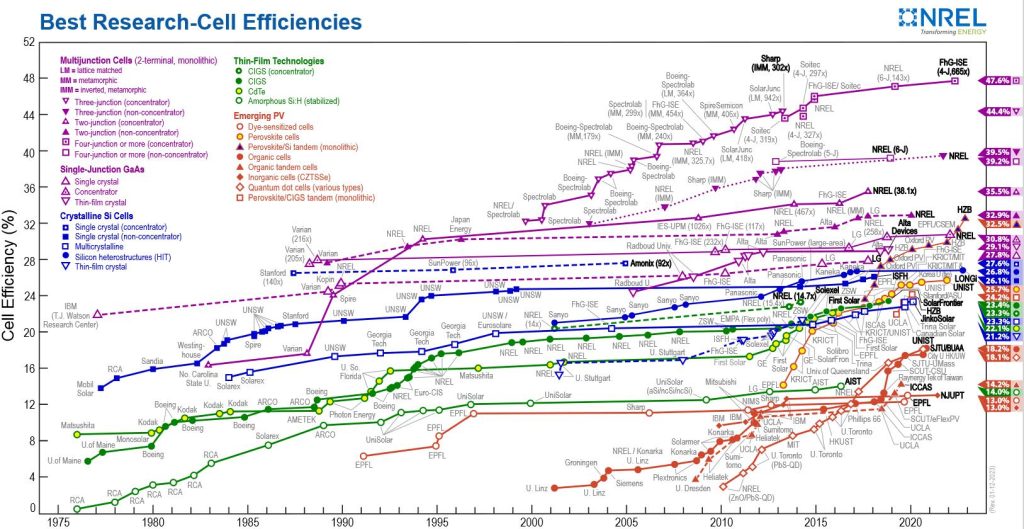Solar energy is an essential component of the transition to renewable energy. Solar panels are a reliable and cost-effective way to generate electricity, and the technology behind them continues to evolve rapidly. In recent years, researchers have made significant advances in solar panel technology, and the future looks bright for solar energy.
One of the most exciting developments in solar panel research is the advancement of perovskite solar cells. These cells use a special type of crystalline structure called perovskite to absorb sunlight and generate electricity. Perovskite solar cells have the potential to be even more efficient than traditional silicon solar cells, with efficiencies of up to 50%. Additionally, they can be produced using simple manufacturing processes, making them cheaper and more accessible than traditional solar panels.
Another area of solar panel research is the development of tandem solar cells. Tandem solar cells combine different types of solar cells to capture a broader range of the solar spectrum. By using multiple layers of solar cells with different materials, researchers hope to create solar panels that can convert a higher percentage of sunlight into electricity. This technology is still in the early stages of development, but it has the potential to significantly increase the efficiency of solar panels.
Researchers are also working on improving the durability and longevity of solar panels. Solar panels are exposed to harsh weather conditions and environmental factors that can cause them to degrade over time. Researchers are working to develop new materials and coatings that can protect solar panels from the elements and extend their lifespan.
Another area of research is the integration of solar panels with other technologies, such as energy storage systems and electric vehicles. By combining solar panels with energy storage systems, homeowners and businesses can store excess energy generated by their solar panels for use later. This can help to offset the variability of solar energy production and make it a more reliable source of electricity. Integrating solar panels with electric vehicles can also help to reduce the carbon footprint of transportation by using renewable energy to power vehicles.
The future looks bright for solar energy. As technology continues to improve, solar panels will become more efficient, durable, and affordable. Solar energy has the potential to become a significant source of energy for homes, businesses, and entire communities. With the right incentives and policies, we could see widespread adoption of solar energy in the near future.
One of the most significant barriers to the adoption of solar energy is the initial cost of installation. While the cost of solar panels has decreased significantly over the past decade, it can still be a significant investment for homeowners and businesses. However, there are many incentives and financing options available that can help to offset the initial cost of installation. In addition, as the technology improves, the cost of solar panels is expected to continue to decrease, making them even more accessible.
Another challenge facing the widespread adoption of solar energy is the variability of solar energy production. Solar panels only generate electricity when the sun is shining, which can make it difficult to rely solely on solar energy for electricity. However, as mentioned earlier, integrating solar panels with energy storage systems can help to address this challenge.
In conclusion, solar energy is an essential component of the transition to renewable energy. As technology continues to improve, solar panels will become more efficient, durable, and affordable. With the right policies and incentives, we could see widespread adoption of solar energy in the near future. Solar energy has the potential to help us reduce our reliance on fossil fuels and combat climate change, making it an essential part of the sustainable energy mix.


